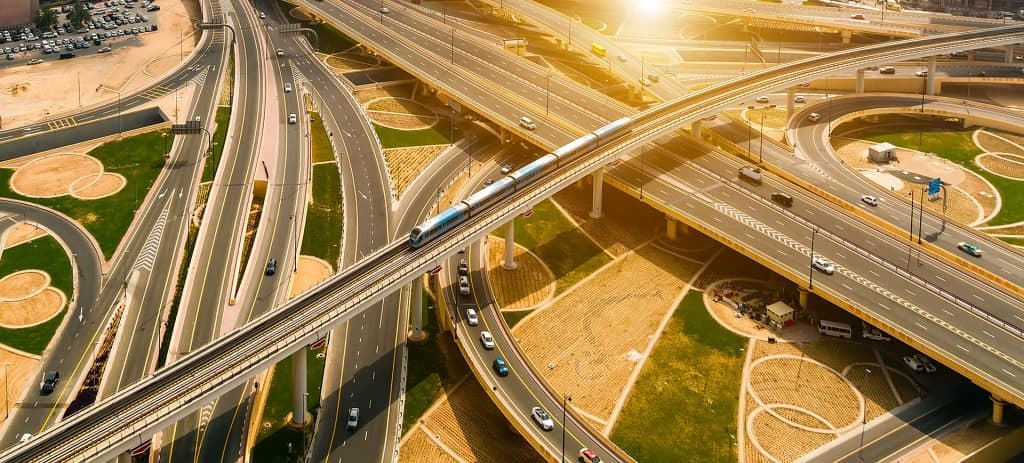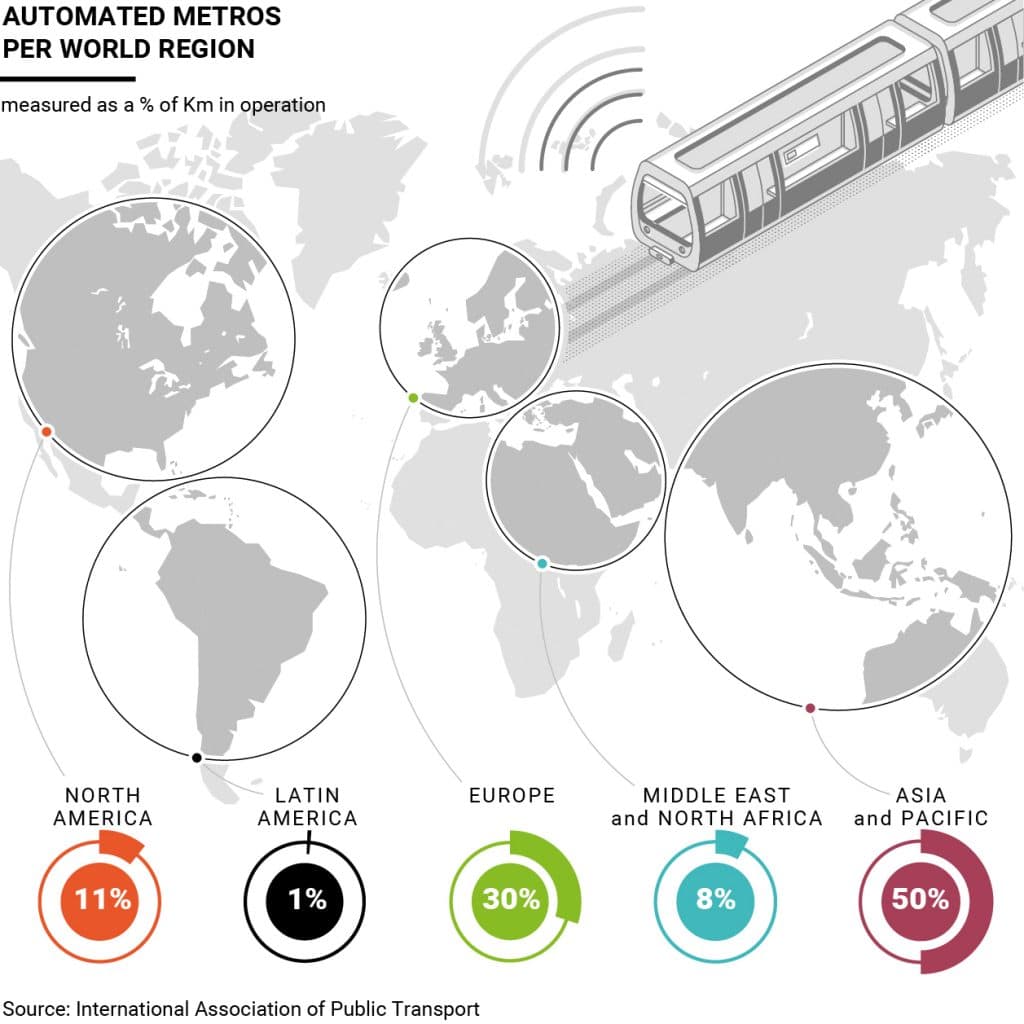
It has taken a while, but the rate of deployment of fully automated metro lines – having reached a milestone of 1,000 kilometres – is finally set to quicken, especially in Asia where cities are investing heavily in public transport to meet the needs of a growing population.
Since the opening of the first line of its kind in the Japanese port city of Kobe in 1981, the proliferation of this technologically advanced service in cities throughout the world has been steady but slow.
It took 30 years for the combined distance covered by these lines in cities like Lille, Vancouver and Sao Paulo to reach 500 kilometres.
Since then, the rate of adoption has accelerated considerably.
In a mere eight years, the figure doubled, reaching a milestone of 1,000 kilometres in March 2018 with the opening of the Pujiang Line in Shanghai, China, according to the Observatory of Automated Metros, a permanent body of the International Association of Public Transport (UITP).
Exponential Growth
Ramón Malla, the observatory’s chairman, expects the growth rate to be “exponential” in the next decade. «Expansion will continue at a faster rate still in the next decade», he said in a UITP statement announcing the milestone.
By 2028, there could be more than 3,800 kilometres of lines in operation
– nearly quadruple the combined distance reached in March 2018,
according to a Statistics Brief published on May 23 by UITP, the
international network for public transport authorities and operators.
«Most of this growth corresponds to the expected opening of 87 new lines, or extensions of existing lines».
The majority of these lines will be in Asia, with Chinese cities
expected to open 37 in the next five years, according to the Statistics
Brief.

Best Option
UITP Director Rail Transport Laurent Dauby views the quickening growth rate as a sign of recognition on the part of cities of the benefits of the technology, according to the UITP statement on the 1,000-kilometre milestone. Fully automated metro lines – whose trains operate without drivers – are flexible, varying the rate of service throughout the day. They are safer
because they reduce the chance of human error. They also save on energy
consumption because they operate more efficiently. These benefits are
in addition to those offered by traditional lines, such as reducing traffic congestion and air pollution.
In the Statistics Brief, UITP calculates there were 63
fully automated lines in 42 cities in 19 countries covering a total of
1,026 kilometres as of December 2018, a few months after the
1,000-kilometre milestone was reached. In other terms, nearly a quarter
of the world’s metro systems have at least one fully automated line.
Since then, lines have been opening in various parts of the world, including Sydney Metro North West, the first of its kind in Australia, whose bridge and viaduct were built by Salini Impregilo Group. Later this fall, Copenhagen is to open Cityringen,
a line entirely built by the Group that encircles the Danish capital’s
historic centre, while in Milan the group is building the M4, the line that will connect Linate airport with the city center.
Growth in Asia
Of the 1,026 kilometres achieved by December 2018, 50% are in Asia, making the region the leader in the sector, according to UITP. This is thanks to the opening of five lines in South Korea, Malaysia and China in the last two years.
Europe is second at 30%, with North America and Middle East following at 11% and 8%, respectively. Latin America is last with a mere 1%.
Although fully automated metro lines might represent
only 7% of all lines in operation in the world, it is because they have
been built during the last 37 years – a relatively short period of time
given how metros have been around for 150 years.

